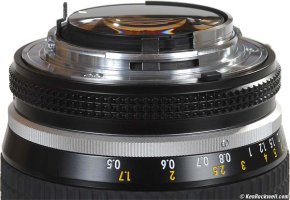ahsanford said:
Haydn1971 said:
I'm still seeing the following...
50mm f1.8 - current cheapo
50mm f1.8/2.0 IS - new, just like the 35mm f2.0 IS, priced similarly
50mm f1.4 L - New Sigma smasher with blue glass tech etc
50mm f1.2 L - Existing model
50mm macro dumped
I think the two in bold above will just be one new L lens (not in addition -- I mean a 50L replacement), and they will abandon the relatively simple design and go big/heavy as if it were an Art lens. Don't expect the next-L to be tiny -- this is the era of the pickle jar primes.
- A
My "prediction" (guess!!) is there will be only one L 50 (as ahansford predicts), and I reckon it will remain at f/1.2 as a differentiator from the competition. The other question to answer is what ahansford will get in response to his wish for a 50/nooneknows IS

I am unconvinced about a 50/2 IS or 50/1.8 IS. The newer zoom lenses are so good it seems to me the most significant appeal of a prime these days is having a wide aperture, although the appeal of size/weight and price need some consideration too. On balance, I think Canon will go with
50 1.8 STM.
50 1.4 USM II. 50 1.4 IS is a possibility but I think only if Canon can do it without making the lens too large, heavy or expensive. Otherwise I think they will sacrifice IS to keep f/1.4 and a moderate size and cost. The role of a small, moderately wide aperture prime with IS is already filled by the 35/2 IS, and even though we're talking about different focal lengths, I feel like more people would go for both a 35/2 IS and 50/1.4 in their kits than a 35/2 IS and a 50/2 IS (or is that just me?!).
50 1.2L II - possibly 50 1.2L IS but my guess is it will forego IS, just as the 35L II has. I don't expect this to be small and light (or cheap!).
That said, Tamron's new 45 1.8 VC perhaps does mean Canon will be motivated to have a 50 IS of some sort ...?
Will be interesting to see what Canon actually does!

